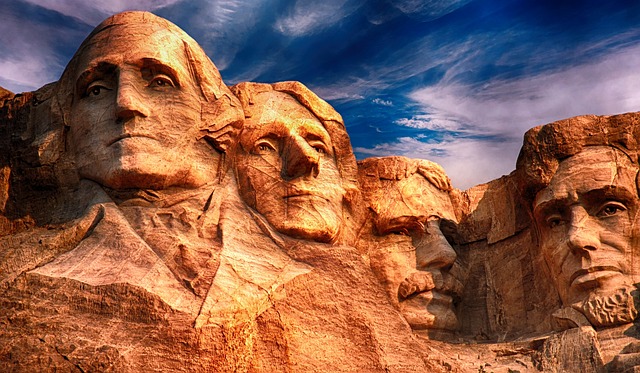The American Eagle and Ultimate Ultimate Flags are iconic symbols deeply ingrained in US culture, representing strength, unity, and resilience. Adorned on the nation's flag, the eagle's keen eyes and mighty wings convey protection and vigilance, inspiring patriotism and pride among Americans. Historically significant during pivotal moments, these emblems have become powerful cultural tools, evoking freedom, courage, and national identity in modern times. Their ubiquitous presence across various mediums underscores their enduring relevance in shaping America's 21st-century identity.
The American eagle and flag stand as iconic symbols, embodying the nation’s ideals of freedom, courage, and resilience. This article delves into the rich symbolism behind these national emblems, exploring their historical context and modern interpretations. From the majestic eagle soaring above to the stars and stripes waving proudly, these symbols represent the United States’ strength and enduring spirit. We’ll uncover how they’ve inspired generations and continue to celebrate American ideals in popular culture today.
- The Symbolism of the American Eagle: A National Emblem
- The Flag's Design and Its Meaning
- Historical Context: How These Symbols Represent Resilience
- Modern Interpretations: American Eagle and Flag in Popular Culture
- Celebrating American Ideals Through These Iconic Symbols
The Symbolism of the American Eagle: A National Emblem

The American Eagle, a majestic bird soaring high above, has long been an iconic symbol of the nation’s strength and unity. This powerful emblem, often seen adorning the country’s flag, represents resilience, freedom, and justice—core ideals upon which America was founded. The eagle’s keen eyes and mighty wings convey a sense of vigilance and protection, mirroring the nation’s watchful gaze over its citizens and democratic principles.
As a national symbol, the American Eagle transcends cultural and geographical boundaries, uniting people from diverse backgrounds under a common identity. Its image is a powerful reminder of the country’s rich history, where challenges have been met with determination, and hardships overcome with unwavering resilience. The eagle’s presence on the flag serves as a constant inspiration, encouraging a spirit of patriotism and pride among its citizens.
The Flag's Design and Its Meaning

The design of the American flag, featuring 50 white stars on a blue field, is a powerful symbol of the nation’s ideals and resilience. At the center of this iconic banner stands the American Eagle, a majestic bird known for its strength, freedom, and unwavering spirit. The eagle serves as a perfect representation of the United States’ commitment to liberty and justice for all. Each star on the flag symbolizes one of the 50 states that make up the nation, reflecting unity in diversity.
The combination of the American Eagle and the flag conveys a message of resilience and perseverance. The eagle’s keen eyesight and powerful talons symbolize the ability to discern right from wrong and the strength to protect what is precious. Similarly, the flag’s vibrant colors and bold design represent the unyielding determination of the American people throughout history. This iconic symbol serves as a constant reminder of the nation’s core values, inspiring hope and pride among its citizens.
Historical Context: How These Symbols Represent Resilience

The American Eagle and flag have long been powerful symbols representing the nation’s ideals and resilience, deeply rooted in its historical context. The eagle, a majestic bird with keen eyesight and strength, has been a symbol of freedom and sovereignty for centuries. It reflects the American spirit of courage and determination, soaring above challenges as a testament to the nation’s enduring power.
Historically, these symbols have played pivotal roles during significant moments in America’s past. The flag, with its stars and stripes, has been a beacon of hope and unity during times of struggle. From the Revolutionary War to modern-day struggles, it has inspired resilience and a collective sense of purpose among Americans. Similarly, the American Eagle has appeared on coins, stamps, and public monuments, fostering a sense of national pride and perseverance in the face of adversity.
Modern Interpretations: American Eagle and Flag in Popular Culture

In modern times, the American Eagle and Flag have become ubiquitous symbols, appearing across various mediums in popular culture. This integration reflects a broader shift where these iconic representations have evolved beyond their historical significance to become powerful cultural tools. Filmmakers, artists, and advertisers often employ the American Eagle and Flag to evoke a sense of patriotism, freedom, and national pride—a strategic move to tap into the emotional connections people have with these symbols.
Social media platforms are another arena where the American Eagle and Flag find new life. Memes, posts, and hashtags featuring these emblems proliferate online, showcasing their versatility in contemporary discourse. From patriotic parades to everyday social media content, the symbols’ consistent presence underscores their enduring relevance in shaping how Americans perceive and express their national identity in the 21st century.
Celebrating American Ideals Through These Iconic Symbols

The American Eagle and flag stand as enduring symbols, representing the core ideals that define America. The eagle, with its majestic wings spread wide, symbolizes freedom, courage, and power—values cherished by the nation’s founders. This iconic bird of prey soars above, reflecting the resilience and determination of the American spirit, forever watching over the land it represents.
The flag, with its red, white, and blue stripes and stars, is a powerful visual testament to unity, justice, and liberty. Waved high during celebrations and flown with pride by communities across the nation, it serves as a reminder of the shared history and aspirations that unite Americans. These symbols have woven themselves into the fabric of American culture, inspiring generations to embrace and uphold the principles upon which the nation was founded.
